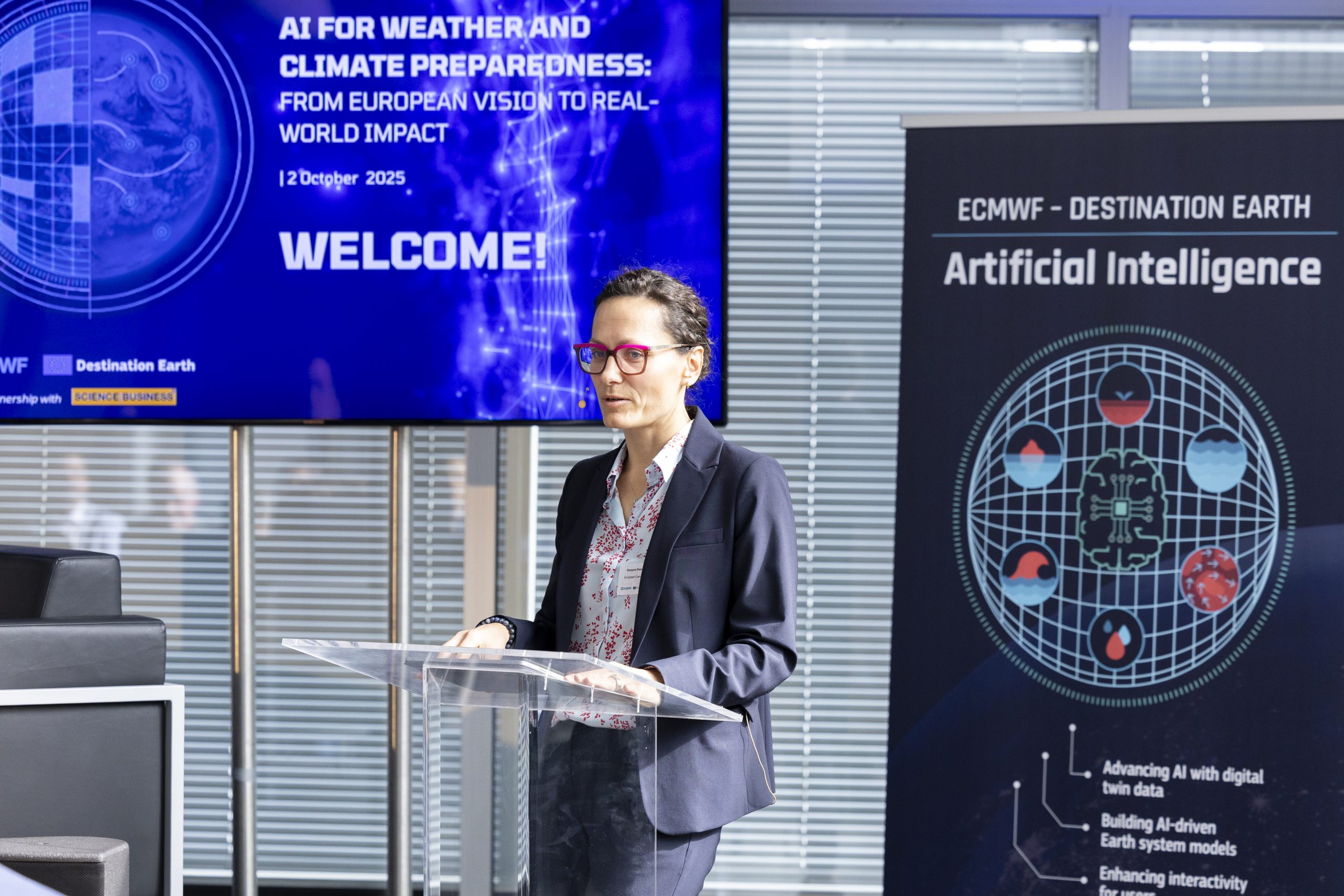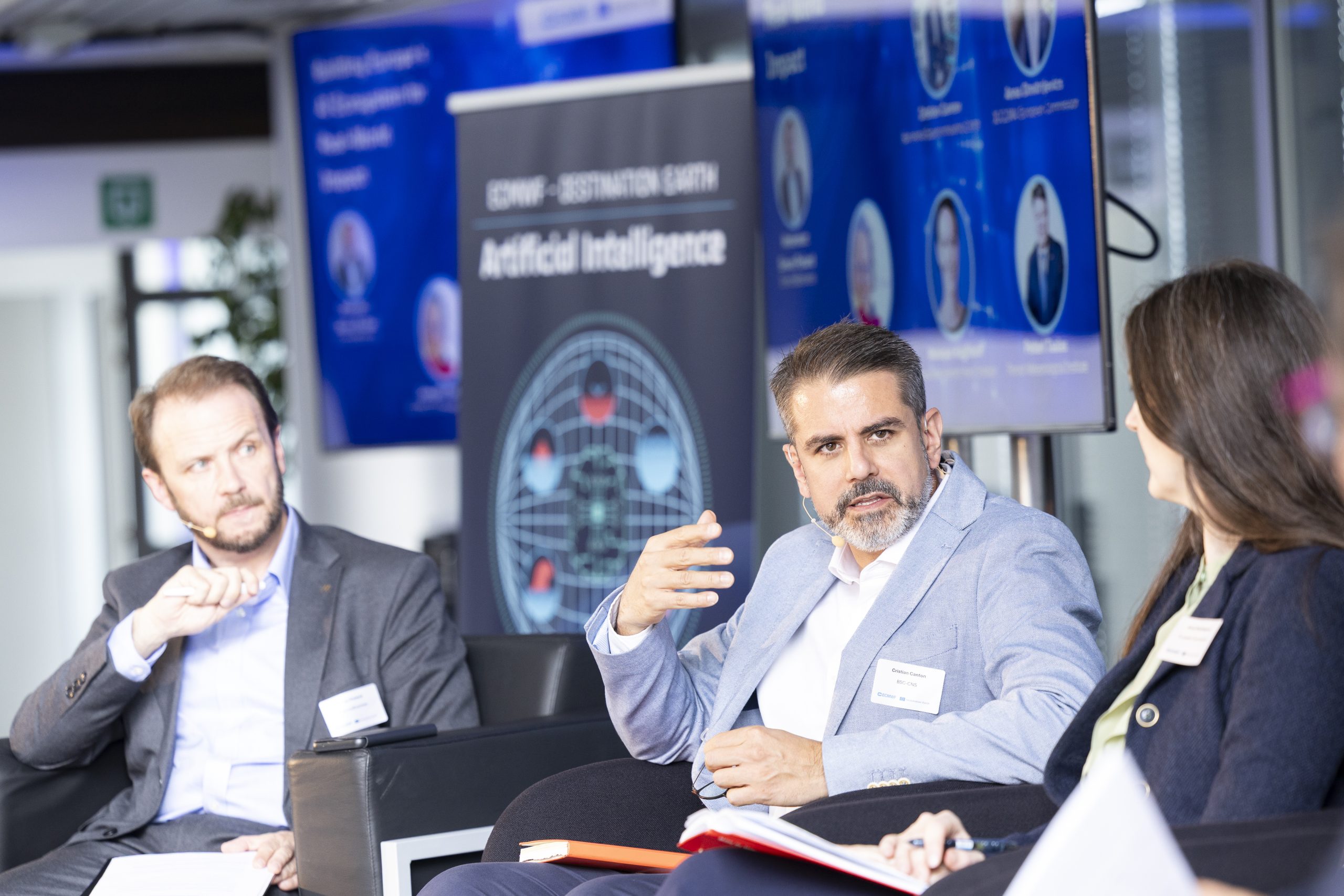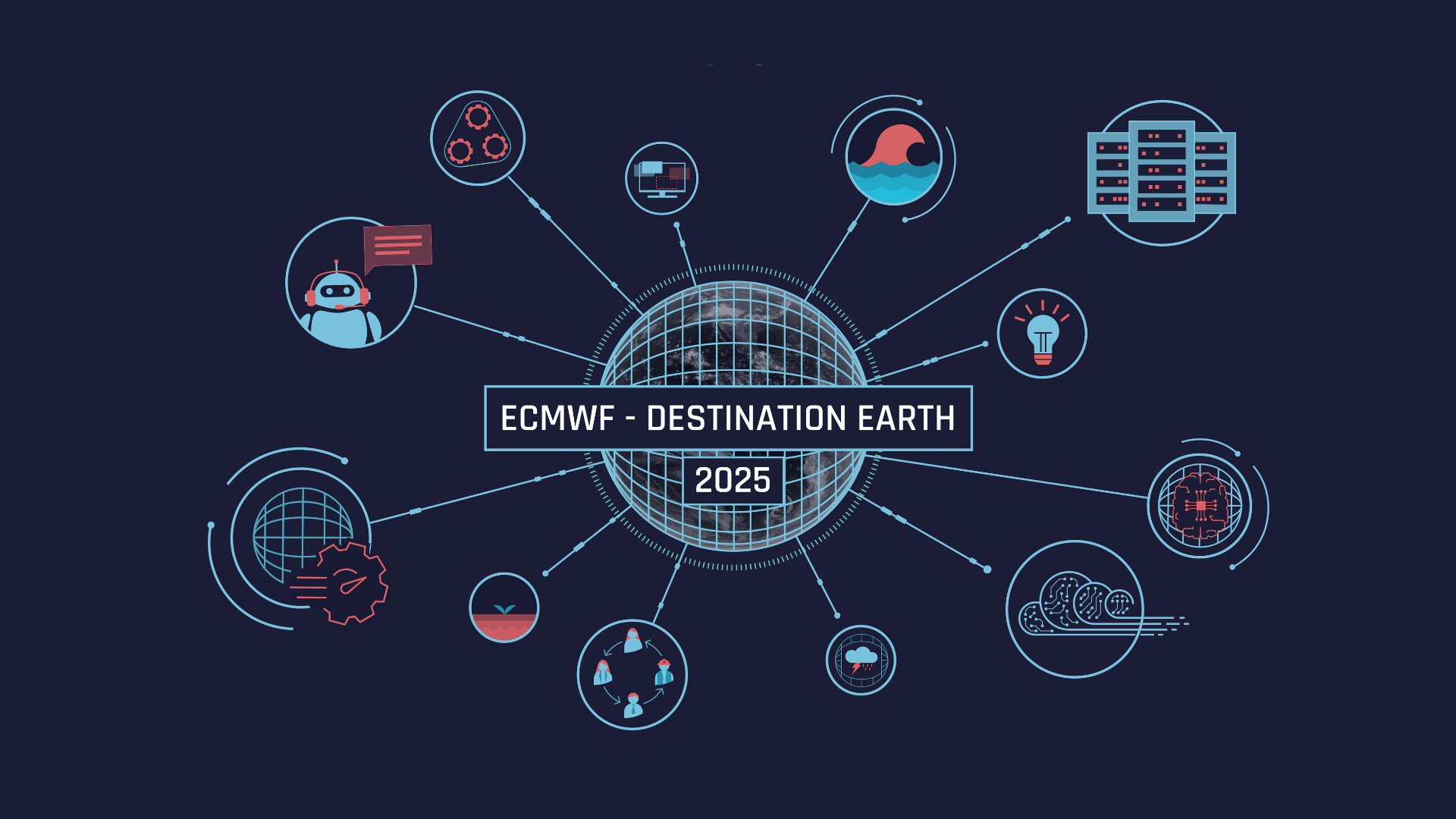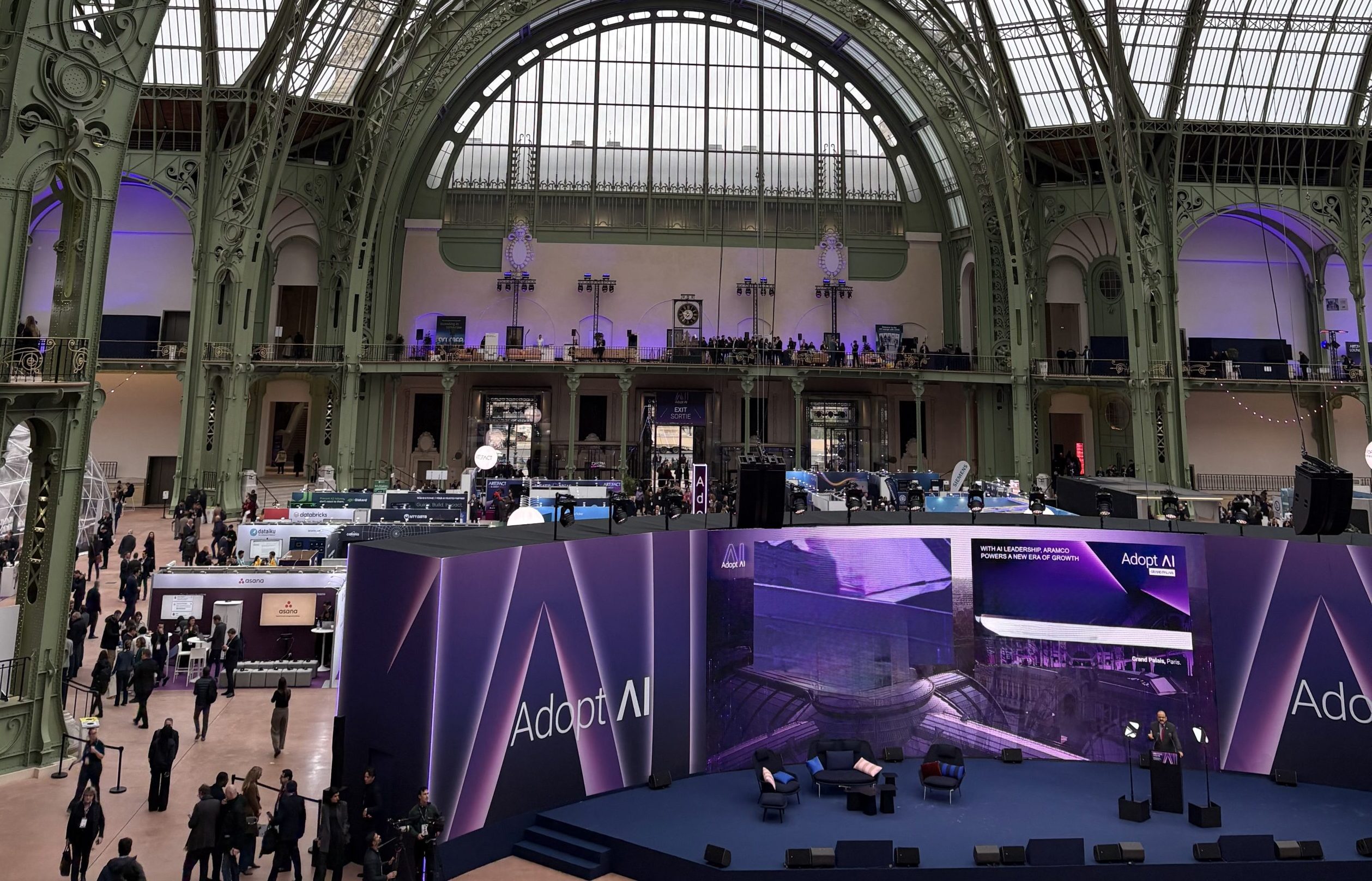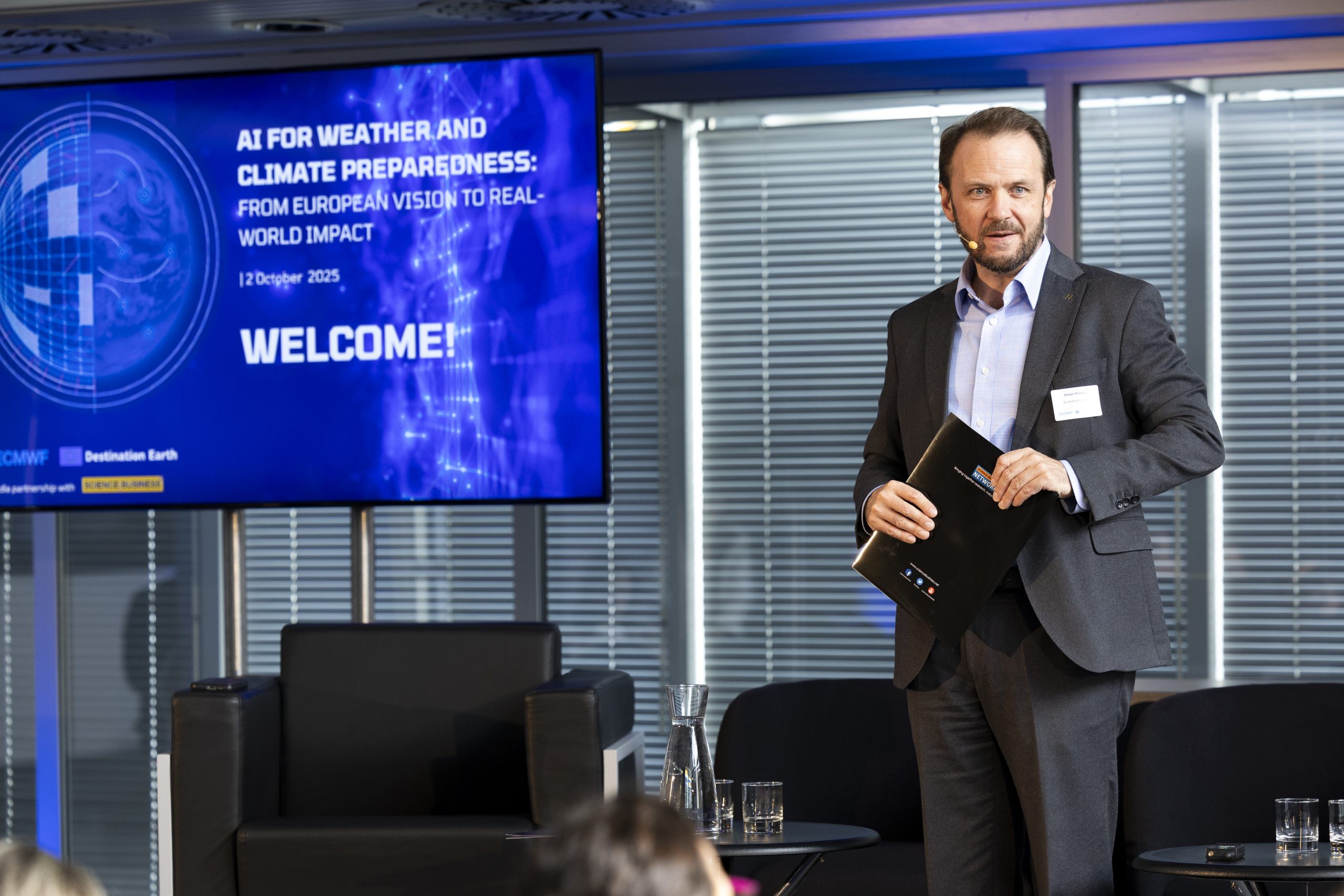
AI is opening new possibilities to strengthen Europe’s capacity to anticipate, prepare for, and respond to weather and climate extremes. A high-level event in Brussels brought together leaders from across Europe to showcase how Europe’s scientific excellence, operational expertise, and collaborative network, combined with major investments in supercomputing and AI, are positioning the continent to lead in applying AI for weather and climate preparedness.
Organised by ECMWF with the support of the European Commission’s DG CNECT and in media partnership with Science|Business, the event demonstrated how AI is being applied across national and EU initiatives – from AI-based operational forecasts to emerging Earth system models. These efforts lay the groundwork for trusted and accessible AI-based solutions that enhance early warning systems, strengthen climate resilience, and support long-term adaptation.
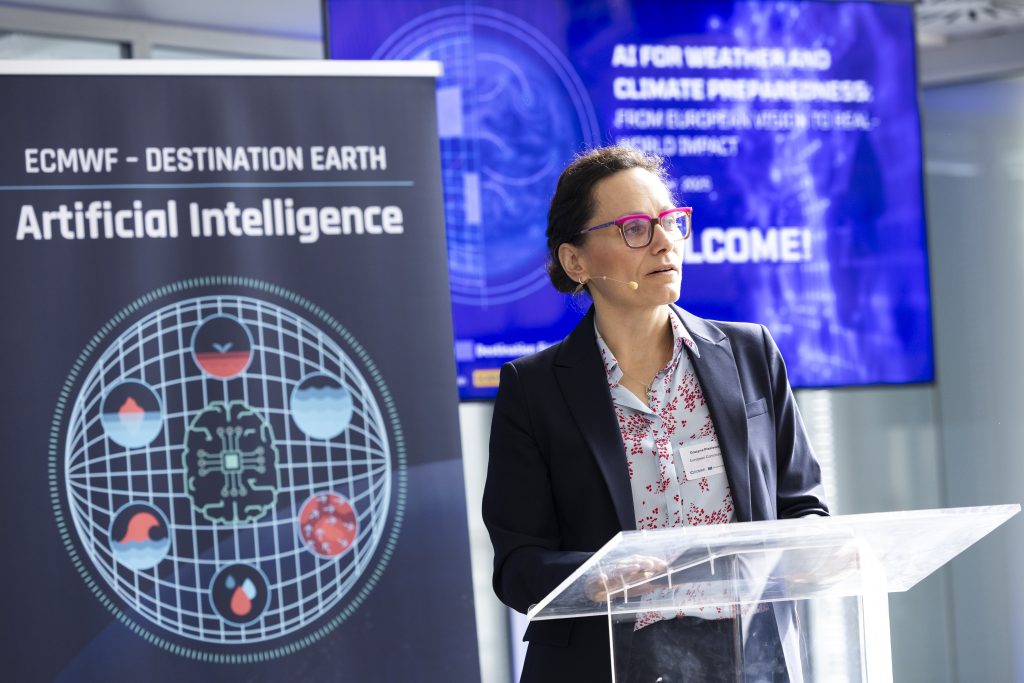
Europe’s digital ambition driving climate and weather innovation
Grazyna Piesiewicz, Head of Unit for High Performance Computing and Applications at DG CNECT, opened the event by highlighting the strategic ambition behind Europe’s digital investments. From scaling compute capacity through EuroHPC to developing AI Factories and Gigafactories, Europe aims to accelerate innovation and secure digital sovereignty.
“This is Europe’s digital firepower at the service of society,” she said, referring to EU’s efforts around high-performance computing, AI infrastructure, and targeted initiatives such as Destination Earth. Destination Earth – implemented by ECMWF, ESA and EUMETSAT, with over 100 partner institutions – was presented as a powerful example of this strategy in action.
“One of the most inspiring applications is Destination Earth,” Piesiewicz noted. “It ensures scientific breakthroughs in modelling are translated into operational reliability, accessible applications, and trusted services.”
Now in the middle of its second phase, Destination Earth is leveraging EuroHPC to run Earth system digital twins at unprecedented high resolution. The resulting high-quality data streams are fueling a new generation of AI-based models and services.
Why Europe is moving fast in AI for weather and climate
Speakers emphasized that unlocking AI’s full potential for weather and climate preparedness requires more than just compute and high-quality data – which Europe already has through EuroHPC, upcoming AI Factories, and programs like Copernicus and Destination Earth. It also demands scientific and operational expertise: the ability to validate results, interpret them in context, and deliver systems that can be reliably used.

As Irina Sandu, Director of Destination Earth at ECMWF, explained:
“Turning AI research into operational tools – especially in a domain as strategic as weather and climate – is about more than training neural networks. It means embedding AI into full end-to-end systems: from data, to models, to verification and delivery, and with users in the loop.”
Building on this combination of data, infrastructure, deep expertise, and a long-standing tradition of collaboration, ECMWF and national meteorological services across Europe have moved quickly in AI. Together, they developed ANEMOI – a shared open-source framework, which supports developing a wide range of machine learning applications for weather and climate. ECMWF used ANEMOI to build AIFS, the first fully operational AI-based global forecast model, which now runs daily alongside their physics-based system. Several national meteorological services are also using ANEMOI to operationalize the use of AI for weather predictions.
“This combination of operational excellence and deep collaboration across the European weather and climate community gives us a real edge,” Sandu added.
The importance of building trusted operational systems, and doing so in partnership, was echoed by Maarten van Aalst, Director General of the Royal Netherlands Meteorological Institute (KNMI):
“Europe is expected to be the best and AI models are going to be an important element to be the best in the future. They need to be trusted as much as our current operational systems. And we need to do this fast enough – building that trust together by leveraging all our partnerships.”
AI in action: From cutting-edge models to accessible tools
Using AI to enhance Europe’s weather and climate capabilities requires more than infrastructure and expertise. It also needs talent – which Europe has in abundance. This message was clearly underscored by Marianne Thyrring, Director of the Danish Meteorological Institute, when introducing a spotlight session featuring early-career scientists, who presented AI innovations within Destination Earth.

Sara Hahner from ECMWF illustrated how Destination Earth is expanding the use of AI across the Earth system by developing models for land, sea surface temperature, sea ice, wave height, and hydrology – with exciting first results. “This is one of the objectives in Destination Earth: to ultimately build a fully AI-based Earth system model,” she said.
Another objective is to advance AI for climate. Eva Prieto from Predictia presented the Climate Emulator; an AI tool built using data from Destination Earth’s Climate Change Adaptation Digital Twin to deliver faster, more efficient climate simulations in support of scenario planning.
The AI in Destination Earth video presented during the event highlighted how AI is used within DestinE to enhance the capabilities of its digital twins, making models and simulations more accessible to a wider range of users.
Lene Østvand, from the Norwegian Meteorological Institute, showcased the Forecast in a Box – a novel AI solution developed by ECMWF in partnership with MET Norway. It enables users to deploy and run AI-based forecasts anywhere – generating tailored outputs without relying on large-scale compute infrastructure.
Petteri Taalas, Director General of the Finnish Meteorological Institute and former WMO Secretary-General, highlighted the global importance of such innovations:
“Worldwide we have 100 countries that don’t have proper early warning service capability. That’s something where Europe could play a role – and it is actually playing a role – by supporting those countries.”
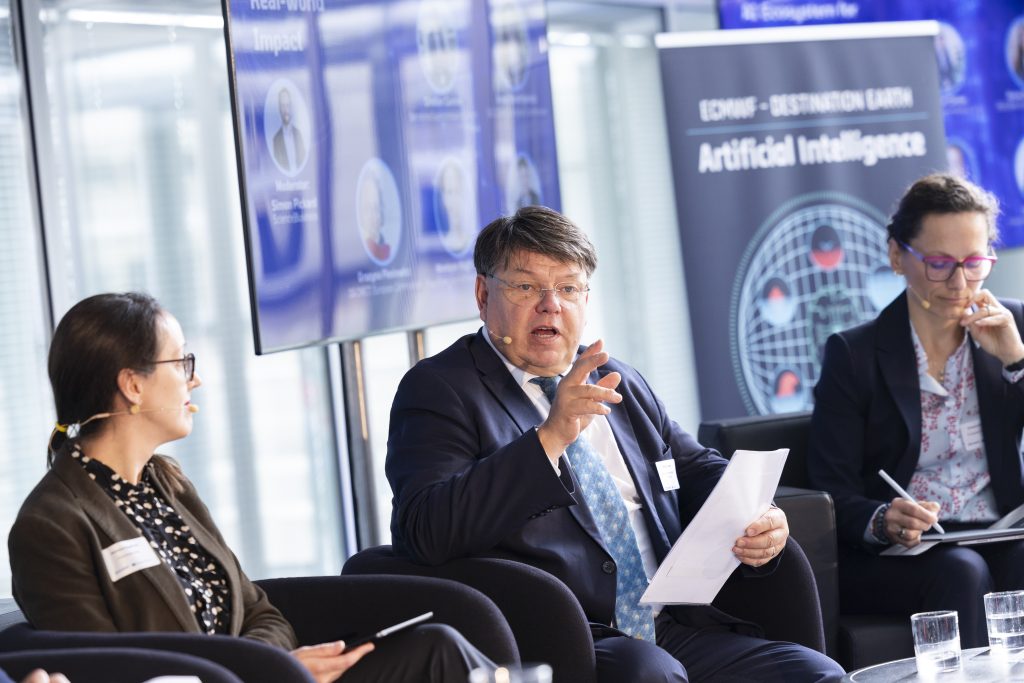
He also emphasized how Destination Earth’s high-resolution models can overcome limitations of current climate models:
“You need to have combined models of ocean and glaciers and the atmosphere,” he explained. “With the current climate models, we cannot go to high enough resolutions that we are able to say how quickly Arctic glacier melting will take place or how pronounced it will be.”
Building trust and scaling AI applications
Speakers underlined the importance of trust, openness, and strong governance to ensure that AI for weather and climate is developed in ethical, transparent, and trustworthy ways.
Monique Kuglitsch from the Fraunhofer Institute for Telecommunications, Heinrich-Hertz-Institut, HHI highlighted EU and national efforts to promote ethical AI, pointing to the AI Act and broader digital policy as key to building confidence in high-impact domains like weather and climate, where explainability and reliability are essential.

Representatives from the European Commission – including DG CNECT, DG CLIMA and DG ECHO – shared how AI-enabled capabilities from Destination Earth and the broader ecosystem can boost European and international climate preparedness and disaster response, while emphasizing the need to earn and sustain public trust for these new capabilities.
Looking ahead, platforms like the AI Factories and upcoming Gigafactories will play a key role for scaling the next wave of AI climate applications.
“When you combine the investments from Destination Earth in data and new technology, and the infrastructure from EuroHPC and AI Factories – magic can happen,” said Cristian Canton, Associate Director at the Barcelona Supercomputing Center. “These platforms will be a game-changer – accelerating the deployment of AI tools and enabling the creation of an AI layer of climate intelligence to support risk assessment and long-term adaptation.”
A strong foundation and momentum to build on
The event showed how Europe’s long-standing strengths – from scientific and operational expertise to deep-rooted collaboration – are now converging with investments in AI and supercomputing to deliver cutting-edge AI innovation for weather and climate.
In the closing session, Florian Pappenberger, Director–General Elect at ECMWF, Jørn Kristiansen, Director of Development Center for Weather Forecasting at the Norwegian Meteorological Institute, and Grazyna Piesiewicz, Head of Unit at DG CNECT, all emphasized that this convergence gives Europe a clear edge.

It’s not just about developing novel AI techniques. It is about embedding AI innovation into trusted operational systems that support early warning, weather preparedness, and long-term climate resilience.
As Florian Pappenberger concluded:
“Collectively across Europe, we’ve turned decades of operational experience into a launchpad for AI in weather and climate, and now we’re scaling these capabilities. We have the data, the tools, the expertise, and the partnerships to make it happen.”
Watch the replay of the event:
In pictures:
Credit pictures: ECMWF
Destination Earth is a European Union funded initiative launched in 2022, with the aim to build a digital replica of the Earth system by 2030. The initiative is being jointly implemented by three entrusted entities: the European Centre for Medium-Range Weather Forecasts (ECMWF) responsible for the creation of the first two ‘digital twins’ and the ‘Digital Twin Engine’, the European Space Agency (ESA) responsible for building the ‘Core Service Platform’, and the European Organisation for the Exploitation of Meteorological Satellites (EUMETSAT), responsible for the creation of the ‘Data Lake’.
We acknowledge the EuroHPC Joint Undertaking for awarding this project strategic access to the EuroHPC supercomputers LUMI, hosted by CSC (Finland) and the LUMI consortium, Marenostrum5, hosted by BSC (Spain) Leonardo, hosted by Cineca (Italy) and MeluXina, hosted by LuxProvide (Luxembourg) through a EuroHPC Special Access call.
More information about Destination Earth is on the Destination Earth website and the EU Commission website.
For more information about ECMWF’s role visit ecmwf.int/DestinE
For any questions related to the role of ECMWF in Destination Earth, please use the following email links:
Press and Communications enquiries
Destination Earth is a European Union funded initiative launched in 2022, with the aim to build a digital replica of the Earth system by 2030. The initiative is being jointly implemented by three entrusted entities: the European Centre for Medium-Range Weather Forecasts (ECMWF) responsible for the creation of the first two ‘digital twins’ and the ‘Digital Twin Engine’, the European Space Agency (ESA) responsible for building the ‘Core Service Platform’, and the European Organisation for the Exploitation of Meteorological Satellites (EUMETSAT), responsible for the creation of the ‘Data Lake’.
We acknowledge the EuroHPC Joint Undertaking for awarding this project strategic access to the EuroHPC supercomputers LUMI, hosted by CSC (Finland) and the LUMI consortium, Marenostrum5, hosted by BSC (Spain) Leonardo, hosted by Cineca (Italy) and MeluXina, hosted by LuxProvide (Luxembourg) through a EuroHPC Special Access call.
More information about Destination Earth is on the Destination Earth website and the EU Commission website.
For more information about ECMWF’s role visit ecmwf.int/DestinE
For any questions related to the role of ECMWF in Destination Earth, please use the following email links:


